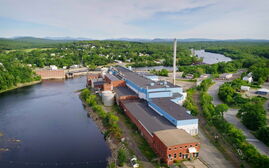Processing Your Payment
Please do not leave this page until complete. This can take a few moments.
- News
-
Editions
-
- Lists
-
Viewpoints
-
Our Events
-
Event Info
- Women's Leadership Forum 2025
- On the Road with Mainebiz in Bethel
- Health Care Forum 2025
- On The Road with Mainebiz in Greenville
- On The Road with Mainebiz in Waterville
- Small Business Forum 2025
- Outstanding Women in Business Reception 2025
- On The Road with Mainebiz in Bath
- 60 Ideas in 60 Minutes Portland 2025
- 40 Under 40 Awards Reception 2025
- On The Road with Mainebiz in Lewiston / Auburn
- 60 Ideas in 60 Minutes Bangor 2025
Award Honorees
- 2025 Business Leaders of the Year
- 2024 Women to Watch Honorees
- 2024 Business Leaders of the Year
- 2023 NextUp: 40 Under 40 Honorees
- 2023 Women to Watch Honorees
- 2023 Business Leaders of the Year
- 2022 NextUp: 40 Under 40 Honorees
- 2022 Women to Watch Honorees
- 2022 Business Leaders of the Year
-
-
Calendar
-
Biz Marketplace
- News
- Editions
- Lists
- Viewpoints
-
Our Events
Event Info
- View all Events
- Women's Leadership Forum 2025
- On the Road with Mainebiz in Bethel
- Health Care Forum 2025
- On The Road with Mainebiz in Greenville
- On The Road with Mainebiz in Waterville
- + More
Award Honorees
- 2025 Business Leaders of the Year
- 2024 Women to Watch Honorees
- 2024 Business Leaders of the Year
- 2023 NextUp: 40 Under 40 Honorees
- 2023 Women to Watch Honorees
- 2023 Business Leaders of the Year
- + More
- 2022 NextUp: 40 Under 40 Honorees
- 2022 Women to Watch Honorees
- 2022 Business Leaders of the Year
- Nomination Forms
- Calendar
- Biz Marketplace
EPA to inspect cleanup at Saco Superfund site
 COURTESY / U.S. ENVIRONMENTAL PROTECTION AGENCY
The U.S. Environmental Protection Agency will begin its periodic five-year review of the Saco Tannery Waste Pits Superfund site.
COURTESY / U.S. ENVIRONMENTAL PROTECTION AGENCY
The U.S. Environmental Protection Agency will begin its periodic five-year review of the Saco Tannery Waste Pits Superfund site.
The U.S. Environmental Protection Agency will conduct a comprehensive review this year of cleanup work done at a 212-acre a Superfund site in Saco, where the Saco Tannery Corp. closed operations more than 40 years ago.
The inspection is conducted every five years.
“Every step of the process at a Superfund site is critical and reflects a commitment we make with local communities to be as thorough as possible,” said David Cash, the EPA’s New England regional administrator.
Saco Tannery Corp. operated from 1959 until 1981, when the company filed for bankruptcy and ceased business.
The waste pits site, located at Flag Pond Road, about 4 miles north of the tannery, was used as a disposal area for process wastes such as chromium sludges, acid wastes, methylene chloride and caustic substances. It's estimated that more than 23 million gallons of waste was deposited in two lagoons and 53 disposal pits.
The site was listed on the Superfund National Priorities list in 1983, when EPA began remediation that included the removal of liquid wastes, neutralization of sludges, capping of three pits, and installing a fence along Flag Pond Road to prevent vehicular traffic into the site.
Continued work
Long-term cleanup was performed in two phases. The first phase, site preparation, was completed in 1992. The second phase, completed in 1993, included construction of soil cover systems for the waste pits and lagoons, plus two areas outside the waste pits; re-vegetating the site; creating compensatory wetlands; and constructing permanent security fencing.
In addition to the soil covers, Superfund rules required the creation of on-site wetlands to replace those that were lost with the construction of the soil covers.
Investigation in 1991 and 1992 found there wasn't enough suitable acreage on-site. So EPA and the Maine Department of Environmental explored off-site options. The agencies contacted the Nature Conservancy, which identified the Saco Heath, located less than 2 miles of the site and within the same watershed. The state purchased 247 acres there and has assumed operation and maintenance responsibilities for it since.
This year’s review of the Saco Tannery Waste Pits will be its sixth. The first review was conducted in 1998.
In 1999, EPA took the site off the Superfund program’s National Priorities List.
“Cleaning up hazardous waste sites takes extensive time and effort, and these five-year reviews allow EPA to ensure our cleanup efforts continue to protect public health and the environment, while keeping everyone informed and accountable, especially in those communities that have been overburdened by industrial pollution,” said Cash.
The latest review, conducted in 2019, concluded that “institutional controls” — such as zoning restriction on residential uses — were required for the site, due to some remaining level of contamination or remedies that restrict use of the site.
The federal Superfund program, established by Congress in 1980, investigates and cleans up the country's most complex, uncontrolled or abandoned hazardous waste sites, which EPA attempts to return to productive use. Across New England, there are currently 123 Superfund sites.













0 Comments